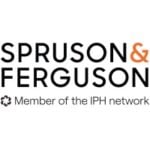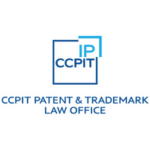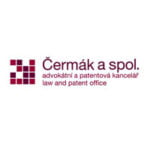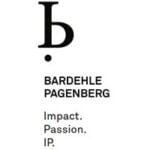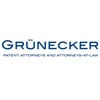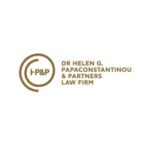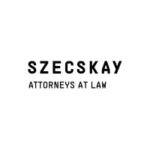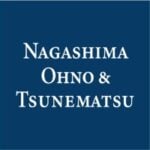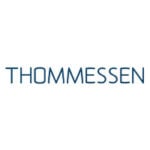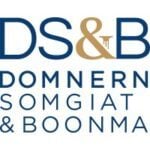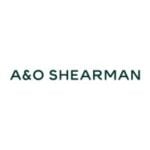-
What is the forum for the conduct of patent litigation?
Claims under the UK Patents Act 1977 (the “Patents Act”) must be brought in specialist courts. These consist of the Patents Court, which is part of the Business and Property Courts of the High Court of Justice, and the Intellectual Property Enterprise Court (“IPEC”). In both courts claims are heard by judges with many years of experience of intellectual property law from their time in practice. The most experienced patents judges hear the most technically complex patents cases. In addition, we are increasingly seeing a number of our most experienced barristers and solicitors sitting as Deputy High Court judges giving the Court increased capacity. Appeals are possible, as set out below.
The idea behind having two specialist first instance courts is that the IPEC will generally deal with more straightforward cases of lower monetary value (cases brought in the IPEC must have a value less than £500,000 unless waived by agreement of the parties). This cap applies to damages and account of profits. Costs recovery in the IPEC is also (with very limited exceptions) capped at £60,000 for proceedings concerning the final issue of liability and £30,000 for proceedings concerning damages or account of profits. This provides parties with a more cost-effective way of commencing less complex patent claims, thus incentivising the enforcement of patents by SMEs. Patent revocation claims may also be brought before the Comptroller-General of Patents (the UK Intellectual Property Office), however such claims are relatively rare.
-
What is the typical timeline and form of first instance patent litigation proceedings?
Where both infringement and validity of a patent are in suit, they are typically heard together; proceedings are not bifurcated and issues of claim construction are considered during trial in the main proceedings. Regardless of the content of a claim, pleadings are exchanged in accordance with deadlines set by the Civil Procedure Rules (“CPR”). Around 1-2 months after close of pleadings, the court holds a Case Management Conference (“CMC”) with the parties to set directions in the case. The resulting Directions Order sets out deadlines for key case preparation milestones in the run up to trial. Parties can, in certain circumstances as set out in the CPR, agree an extension of time to complete a particular action. Such extensions may require the court’s permission. An extension will not be granted if it would threaten critical timings such as the trial date; a trial date, once fixed, will not be moved unless there are exceptional circumstances.
There is the option in patent trials to request an expedited trial, and there is also a streamlined procedure known as the “Shorter Trials Scheme” (“STS”).
The decision to grant expedition, and the extent to which a trial is expedited, is essentially at the discretion of the judge when applying the various factors, for example whether the applicant has shown a good reason for expedition and whether expedition would prejudice the other parties to the case.
The STS is designed to achieve shorter and earlier trials at a reasonable and proportionate cost. This is achieved via a docketed judge setting tightly controlled case management directions with limited evidence and disclosure. Recently, costs capping in the STS has been introduced by a new pilot scheme (PD51ZD), which operates from 1 January 2024 until 31 December 2026 and which applies to all claims issued in the STS in the Patents Court during this period. The pilot scheme has introduced a cap of £500,000 costs for proceedings concerning the final issue of liability and £250,000 for proceedings concerning damages or account of profits. If the STS is used, the trial date (or window) should be fixed to be heard within eight months of the CMC.
Even without expedition or streamlining via the STS, the court will aim, where possible, to list a trial in the court’s diary within 12 months of the claim being issued. However, the extent to which this is achievable in practice depends on a number of factors, such as the availability of the court and the parties’ barristers. Recently, some patents judges have expressed a willingness to list trials outside of the normal court term dates (for example, in September) in order to achieve this aim.
-
Can interim and final decisions in patent cases be appealed?
An order of the IPEC may be appealed to the Patents Court if it is an interim order or the Court of Appeal if it is a final order. Matters heard by the Comptroller-General of Patents in the UK Intellectual Property Office can also be appealed to the Patents Court.
Decisions of the Patents Court may be appealed with permission to the Court of Appeal. Decisions of the Court of Appeal may be appealed with permission to the Supreme Court. Appeals to the Supreme Court have tended to arise relatively infrequently for patent cases on the whole, although a number of very notable appeals covering a broad range of legal issues have been subject to the scrutiny of the Supreme Court over the last few years, such as: infringement under the Doctrine of Equivalents (Actavis v Eli Lilly [2017] UKSC 48); plausibility and the infringement of second medical use patents (Warner-Lambert Company LLC v Generics (UK) Ltd t/a Mylan and Anor [2018] UKSC 56); obviousness (Actavis Group PTC EHF v ICOS Corporation [2019] UKSC 15); sufficiency (Regeneron Pharmaceuticals Inc v Kymab Ltd [2020] UKSC 27); and the grant of licences on FRAND terms (Unwired Planet International v Huawei Technologies (UK) [2020] UKSC 37).
An appeal will only be allowed where there is a real prospect of success or there is some other compelling reason for the appeal to be heard. Furthermore, appeals will only be heard by the Supreme Court if they raise an arguable point of law of general public importance which ought to be heard by the Supreme Court at that time.
The original application for appeal is made to the lower court, but if that court does not give permission, a further written application may be made to the appeal court. Appeals themselves take the form of a review, not a rehearing. This means that it is rare for new evidence to be considered. For new evidence to be heard on appeal it must be shown that the evidence could not, with reasonable diligence, have been obtained at trial, that it would have an important influence on the case, and that it is credible. For this reason, the court hearing the appeal will rarely depart from the findings of fact made at first instance. This is because appeals are reviews on points of law and therefore the judge at first instance is often best placed to determine factual matters in dispute. An appeal judge would have to give good reasons for substituting their own finding of fact for that of the trial judge. This is particularly relevant in the context of findings of (non-)obviousness, where the judge at first instance will have had the benefit of hearing all of the expert evidence first-hand.
-
Which acts constitute direct patent infringement?
As set out in section 60(1)(a) Patents Act, a product patent is directly infringed if a person, without the consent of the proprietor of the patent, carries out any of the following acts in the UK while the patent is in force: makes the product; disposes of or offers to dispose of the product; uses the product; imports the product; or keeps the product, whether for disposal or otherwise.
As set out in section 60(1)(b) Patents Act, a process patent is directly infringed if a person, without the consent of the patent proprietor, uses the process in the UK while the patent is in force. A person would also infringe if they offer the process for use in the UK where they know, or it would be obvious to the reasonable person in the circumstances, that its use there without the proprietor’s consent would constitute infringement.
As set out in section 60(1)(c) Patents Act, a process patent would be directly infringed if a person, without the consent of the patent proprietor, carries out any of the following acts in the UK while the patent is in force: disposes of, offers to dispose of, uses or imports any product obtained directly by means of that process; or keeps any such product whether for disposal or otherwise.
-
Do the concepts of indirect patent infringement or contributory infringement exist? If, so what are the elements of such forms of infringement?
As set out in sections 60(2) and 60(3) Patents Act, indirect infringement in the UK concerns a person other than the patent proprietor, while the patent is in force and without the proprietor’s consent, supplying or offering to supply a person not entitled to work the invention with the means, relating to an essential element of the invention, for putting the invention into effect. What constitutes an essential element will depend on the facts of each case. For indirect infringement to be made out the supply or offer to supply must be in the UK and the invention must be put into effect in the UK, i.e. there is a double territorial requirement. There is also a knowledge requirement. Indirect infringement will only be made out where the alleged infringer knew, or it was obvious to the reasonable person in the circumstances, that the means were suitable for putting the invention into effect in the UK and they were intended to put the invention into effect. This will also depend on the facts of each case and will also be the subject of expert or fact evidence. There is no concept of divided infringement under UK patent law. Where different acts are performed by different actors, they may be liable for infringement as joint tortfeasors, i.e. where two (or more) persons act “in furtherance of a common design”. This is also known as contributory infringement. “Mere assistance” is not enough to make a second party a joint tortfeasor, they must join or share in the commission of the tort to an extent that is more than de minimis. Such “common design” can be a tacit or explicit agreement to combine to perform an act. There is no need to prove that the common design was intended to infringe. If a party is liable as a joint tortfeasor, their liability is for the whole act – not just their part in the common design.
-
How is the scope of protection of patent claims construed?
The court applies a purposive construction of the claims, to arrive at an interpretation which reflects the inventor’s purpose, as understood by the skilled person at the relevant filing or priority date. When assessing interpretation, claims are construed not by dictionary definitions but with the assistance of expert evidence. That expert evidence will relate to the way in which the person skilled in the art would have understood the claims, read in light of the specification as a whole, and also the common general knowledge as at the filing or priority date of the patent. The identity of the notional person skilled in the art is often a point of dispute between parties, each of whom will favour the skilled addressee (or skilled team) who best supports their proposed claim construction.
In 2017 the Supreme Court introduced the doctrine of equivalents in Actavis v Eli Lilly [2017] UKSC 48, setting out a new three question test to determine whether a variation is immaterial and would infringe even in the absence of “normal” or “literal” infringement. The questions to be assessed are:
(1) Does the variant achieve substantially the same result in substantially the same way as the invention, i.e. the inventive concept revealed by the patent?
(2) Would it be obvious to the person skilled in the art, reading the patent at the priority date but knowing that the variant achieves substantially the same result as the invention, that it does so in substantially the same way?
(3) Would the skilled reader have concluded that the patentee nonetheless intended that strict compliance with the literal reading of the relevant claims was an essential element of the invention?
For infringement by immaterial variation to be made out the first two questions must be answered in the affirmative and the last question in the negative. Since the Supreme Court’s judgment in Actavis v Eli Lilly we have seen a number of lower court decisions applying the doctrine of equivalents covering a range of different technical areas.
-
What are the key defences to patent infringement?
Defences to patent infringement include: invalidity (an invalid patent cannot be infringed); non-infringement (no infringing acts were carried out in the UK); and exhaustion (where a product is placed on the market within the EEA with the patentee’s consent, it “exhausts” its IP rights to prevent further movement or resale of those goods – note the further discussion in question 33 below).
In addition, there are a number of statutory exemptions to patent infringement as set out in section 60(5) Patents Act, including private use, experimental use, extemporaneous preparation in a pharmacy of a prescribed medicine, use on a ship or aircraft temporarily in UK territorial waters or airspace, certain permitted agricultural uses, and prior use (see below). We have a “Bolar-like” exemption to patent infringement in the UK, which was introduced in 2005 following the amendments to Directive 2001/83 (on the Community code relating to medicinal products for human use), and which was broadened in the UK in 2014. There is also a prior use defence in the UK. This is set out in section 64 Patents Act and contains the jurisdictional restriction that such use must be in the UK. Limitation may be a defence to patent infringement where the infringement occurred more than six years prior to the claim, but this must be expressly pleaded. Recent cases have confirmed the availability of the Formstein defence to patent infringement in the UK, i.e. if there is a finding of infringement under the doctrine of equivalents, but the consequence of the broader claim scope by virtue of the doctrine of equivalents would be that the patent is invalid, then the claim scope must be limited to the normal interpretation.
-
What are the key grounds of patent invalidity?
The key grounds for patent revocation are set out in section 72(1) Patents Act:
(a) the patented invention is not a patentable invention – the invention must comply with the patentability requirements set out in the Patents Act. It must be new (novel) over the “state of the art” at the priority date, it must have been non-obvious to the person skilled in the art as at the priority date, having regard to the state of the art and to their common general knowledge, it must be capable of industrial application, and must not be excluded subject matter. Excluded subject matter includes: (i) a discovery, scientific theory or mathematical method, (ii) a literary, dramatic, musical or artistic work or any other aesthetic creation whatsoever, (iii) a scheme, rule or method for performing a mental act, playing a game or doing business, or a program for a computer, (iv) the presentation of information, and (v) methods of treatment or diagnosis for the human or animal body.
(b) the patent was granted to a person not entitled – a person who should have been granted a patent, but was not, may bring entitlement proceedings, but will have to discharge the burden of proof to establish why the patent should have been granted to them.
(c) insufficiency – the specification of the patent must disclose the invention clearly enough and completely enough for it to be performed by a person skilled in the art.
(d) added matter – the matter disclosed in the granted patent specification must not extend beyond that disclosed in the original application as filed.
(e) post-grant claim broadening – the claim scope must not be extended by non-permissible claim amendments.
The assessment of how these grounds apply in practice has led to a great deal of judge-made law. For example, the single ground of insufficiency under s72(1)(c) is now commonly thought of as three types of objection: classical insufficiency (or undue burden); Biogen insufficiency (or excessive claim breadth); and uncertainty insufficiency (also referred to as conceptual uncertainty). Further, the concept of plausibility (although not mentioned in s72(1) Patents Act) can be relevant in the assessment of both insufficiency and obviousness.
-
How is prior art considered in the context of an invalidity action?
When seeking to invalidate a patent, the claimant must set out the prior art on which it relies in its Grounds of Invalidity and state whether each is being pleaded for lack of novelty or inventive step. Prior art is usually written material but might be an oral description if appropriate evidence is submitted to prove such a “publication”. There are no geographical limitations on material that might be considered prior art as long as it can be shown to have been made available to the public. A piece of prior art may be used in respect of multiple grounds of invalidity, provided it is a document made available to the public before the priority date of the patent. If the document was made available after the priority date but before the filing date it may be cited in circumstances where there is a priority challenge to the patent. If this challenge is successful, it will be considered as “full” prior art. Such a document may also, in certain limited circumstances, be considered as “novelty only prior art”, in which case it will not be taken into account for the purposes of inventive step. Prior art documents may be combined only if there is a clear reason to do so on the face of the documents but not in other circumstances. This is a strict rule and documents cannot be readily mosaiced in UK patent litigation. It is, however, necessary to read the prior art in the light of the common general knowledge. It is the combination of the common general knowledge and the prior art that will be said to form the “state of the art” against which the questions of novelty and inventive step will be judged. It is also possible to run an invalidity attack based solely on common general knowledge. The common general knowledge is typically evidenced as part of an expert witness statement, supported by review articles and textbooks etc. The Courts increasingly ask parties in litigation to prepare and seek to agree statements on common general knowledge or a primer setting out the background technology of the patent.
-
Can a patentee seek to amend a patent that is in the midst of patent litigation?
Patent claims may be amended during infringement or invalidity proceedings. The patentee must make an application by way of application notice, which must be served on all parties and the Comptroller within seven days of it being filed. The notice must give details of the amendment, the grounds on which it is being sought, and whether the applicant will claim that the patent claims prior to amendment were valid. The Comptroller will, unless the court orders otherwise, advertise the application. A person may, during this time, inform the court of their opposition, which the court may take into account when determining the application. Typically such applications, when made during the course of litigation, will be heard during the full trial of the matter.
-
Is some form of patent term extension available?
Patent term extensions (known as supplementary protection certificates or “SPCs”) have been available since 1993 and result in up to five years of additional exclusivity once the relevant (“basic”) patent has expired. This five-year term is extendable by up to a further six months if a paediatric extension is available. Paediatric extensions were introduced in 2007 to encourage stakeholders to invest in developing and testing medicinal products in children. So-called “negative term” SPCs are also available. These SPCs would themselves have a negative term under the usual rules governing the calculation of SPC duration, but they are potentially valuable now that a paediatric extension may be sought (see below for further details).
Regulation (EC) No 469/2009 sets out the regime for human and veterinary medicinal products (the “Medicinal Products Regulation”) and Regulation (EC) No 1610/96 governs SPCs for plant protection products (the “Plant Protection Products Regulation”) – the impact of Brexit on this legislation is discussed below. Article 7 of the Medicinal Products Regulation states that SPCs must be applied for within six months of the date on which marketing authorisation for the relevant medicinal product (either a human or veterinary product) has been granted. Alternatively, where the authorisation is granted before the basic patent, SPCs may be applied for within six months of the date on which the basic patent has granted. Article 3 of the Medicinal Products Regulation sets out a number of conditions which must be satisfied in order to obtain an SPC:
- The product must be “protected by” a basic patent and that patent must be in force.
- A valid authorisation to place the relevant medicinal product on the market must be granted. Importantly, such an authorisation must meet the requirements of the legislation which sets out the criteria for the approval of the relevant human or veterinary medicinal product.
- The product must not already be the subject of an SPC.
- The authorisation (in the second bullet point above) must be the first to place the product on the market.
In addition, Article 3(2) of the Plant Protection Products Regulation specifies that the holder of more than one patent for the same product shall not be granted more than one SPC for that product. This is one of a number of provisions which applies equally to the interpretation of the Medicinal Products Regulation. The validity of SPCs can be challenged on the basis that the underlying basic patent is not valid or the conditions for the grant of an SPC have not been satisfied (see Article 15 of the Medicinal Products Regulation). The interpretation of these conditions has been subject to a high degree of scrutiny before the national courts, including a large volume of cases before the UK courts. Since these Regulations are instruments of European Union (EU) law, many of these cases have involved references for a preliminary ruling from the Court of Justice of the European Union (CJEU).
On 31st January 2020, the UK left the EU. Under the terms of the Withdrawal Agreement between the UK and the EU, the UK continued to apply EU law and the Regulations referred to above still apply to applications that were pending during the transition period.
The transition period came to an end on 31st December 2020 and from 1st January 2021 the UK’s SPC regime remains largely unchanged. The Medicinal Products Regulation and Plant Protection Products Regulation are retained EU legislation (as amended pursuant to the relevant EU Exit Regulations) and govern new SPCs filed in the UK after the end of the transition period. Applicants should keep in mind, however, certain differences concerning the deadline for filing new SPC applications, the calculation of SPC term and the territorial scope of these SPCs.
Whilst paediatric extensions and the SPC manufacturing waiver were retained following Brexit there is a degree of asymmetry in each case which should be borne in mind. For example, under the UK system, applicants will not need to provide evidence of corresponding authorisations in all EEA member states to obtain a paediatric extension (which is still a requirement under the equivalent EU scheme). This change to the UK regime potentially allows for such extensions to be granted in the UK, in circumstances where that would not previously have been possible for products that were not approved in all EEA member states.
The prospect of the UK diverging from EU law in the SPC arena has been raised recently by the UK High Court’s decision in Merck Serono SA v Comptroller-General of Patents, Designs and Trade Marks [2023] EWHC 3240 (Ch), which concerned the application of the CJEU’s decision in Case C-673/18 Santen (which was handed down during the Brexit transition period). Although the SPC application was rejected under Article 3(d), permission to appeal has been granted, and the Court of Appeal has the power to depart from Santen if it chooses.
-
How are technical matters considered in patent litigation proceedings?
Proceedings before the UK courts are adversarial, unlike proceedings in many European jurisdictions, and it is usual in patent litigation proceedings in the Patents Court for the evidence of expert witnesses to be relied on by parties to support their case. This expert evidence is a very important part of proceedings in the UK courts.
Prior to trial a party will serve their pleadings, witness statements including expert reports, and skeleton argument. As mentioned above, the UK courts increasingly ask parties in litigation to prepare and seek to agree statements on common general knowledge or a primer setting out the background technology of the patent. While these documents are important to the proceedings, the claim will not be determined on the papers alone. An exception is in the IPEC in the event that both parties agree to a trial on the papers.
At trial, a witness statement will ordinarily stand as evidence in chief. Therefore, witnesses will not give oral evidence in chief at trial. However, witnesses will be cross-examined by the other side’s barrister. Oral cross-examination of experts is a crucial part of UK patent proceedings. Cross-examination need not be confined to the contents of the witness statement and they may be questioned on any document, fact or issue which arises in the case. At the conclusion of cross-examination, the barrister representing the party who called that witness has the option of re-examining the witness, although there is no obligation that they do so.
-
Is some form of discovery/disclosure and/or court-mandated evidence seizure/protection (e.g. saisie-contrefaçon) available, either before the commencement of or during patent litigation proceedings?
Disclosure
Fact-finding in UK patent litigation is most often achieved through disclosure. Relevant documents are disclosed to the other side, who may then inspect all documents which are not privileged. A pilot scheme introducing changes to the UK disclosure regime has now become permanent, so that in the Patents Court the parties must provide “initial disclosure” of documents they have relied upon and key documents necessary to enable the other party to understand the case it has to meet when filing their statements of case. This is then followed by disclosure of any known adverse documents (before any searches are carried out) that undermine a party’s case. A party may also seek extended disclosure of further documents, based on a number of different “models” differing in scope. When ordering extended disclosure, the court will seek to ensure that disclosure is directed towards the issues in dispute and that the scope of disclosure is not wider than is reasonable and proportionate in order to fairly resolve the issues. Parties are required to conduct a reasonable search for disclosable documents, taking into account the number of documents which may be involved, the nature and complexity of proceedings, ease and expense of document retrieval, and the significance of any document which is likely to be found. The underlying principle is one of proportionality. Disclosure is also limited to documents which are, or have been, in a party’s control. The duty of disclosure is one which continues throughout the proceedings. If a party fails to disclose a document, or allow its inspection, then they may not rely on it in proceedings unless the court gives permission. In the Patents Court, disclosure will usually be limited to a window, two years either side of the earliest claimed priority date of the patent. Further, disclosure will usually be restricted to those issues in relation to which the disclosure would have real probative value. The Courts do not, for example, typically order disclosure in relation to inventive step.
Where patent infringement is in issue, the alleged infringer can elect to provide a confidential product and/or process description (“PPD”) instead of giving documentary disclosure relating to the products or processes they are alleged to infringe.
In proceedings in the IPEC, the normal expectation is that disclosure will not be ordered. If parties wish for disclosure to be given, they will have to make out a case that it would be appropriate. Again, if an order for disclosure is granted by the court it is likely to be restricted to only some of the issues in dispute.
Evidence Seizure
If a party is concerned that evidence such as infringing articles may be destroyed or concealed, then they may apply for a search order. If a search order is granted it allows a party’s solicitors to enter the other party’s property in order to search for and seize the property specified in the order. Search orders are draconian in nature, given that they breach, albeit justifiably, private property rights. There are therefore safeguards in place to protect the interests of the party who is the subject of the order. A court, before granting a search order, will need to be satisfied:
- That the applicant has an extremely strong prima facie case. A prima facie case must be extremely strong since otherwise the injustice done to the respondent by the execution of the search order would not be justifiable. Any potential or actual damage would be very serious for the applicant.
- There is clear evidence that the respondent has in their possession an incriminating document or incriminating goods.
- There is a real possibility that the defendants may destroy such material before an application is made on notice.
- The harm likely to be caused by the execution of the search order will be in proportion to the legitimate object of the order.
The applicant also has a duty to make full and frank disclosure, as is the norm in applications made without notice to the other party. A search order application should always be made without notice since to act otherwise would be to defeat the object of the order. A claimant may apply for a search order at any stage of proceedings, including before issue of the claim. A defendant may only apply after filing an acknowledgement of service or defence unless the court orders otherwise. In either case, the application should be made as soon as possible.
-
Are there procedures available which would assist a patentee to determine infringement of a process patent?
In patent infringement proceedings the alleged infringer will typically provide a confidential PPD instead of giving disclosure relating to the products or processes they are alleged to infringe. In the case of a process, this will set out the process being used by the alleged infringer. Section 100 Patents Act provides for a reverse burden of proof where the invention for which a patent is granted is a process for obtaining a new product. In such circumstances where that product is produced by another party, it will be taken to have been obtained by the patented process unless it can be proved that was not the case.
-
Are there established mechanisms to protect confidential information required to be disclosed/exchanged in the course of patent litigation (e.g. confidentiality clubs)?
The courts have developed rules designed to encourage parties to honour their disclosure commitments without fear that confidential information will be put at risk. The CPR state that documents which have been disclosed may only be used for the purpose of the proceedings in which they are disclosed. If disclosed documents are used for other purposes this would constitute a contempt of court. This prevents use of disclosed confidential documents for ulterior motives. Schemes, known as confidentiality clubs, may also be set up in order to supplement the protection afforded by the CPR. In a confidentiality club any documents which are confidential are identified as such and their access and use by the receiving party will be restricted. Any pleadings or documents based on documents contained in the confidentiality club will themselves become subject to the same restrictions. Ordinarily, even if documents are part of a confidentiality club, documents will cease to be confidential if they are read out or referred to in open court. However, patent judges are mindful of confidentiality issues which may arise and can keep information confidential by:
- Making an interim order restricting or prohibiting use of a confidential document even if it is read out or referred to in open court. This order can be made permanent at the conclusion of proceedings.
- Not stating confidential information in public, which sometimes may involve sitting in private for part of the case. A private hearing will only include members of the confidentiality club. The courts will limit private hearings to those situations where sitting in private would be absolutely necessary in order to achieve justice between the parties. The degree of privacy must be kept to a minimum and a private hearing is likely to be ordered, for example, in circumstances where commercially valuable confidential information is in issue.
-
Is there a system of post-grant opposition proceedings? If so, how does this system interact with the patent litigation system?
No post-grant oppositions can be raised before the UKIPO following the grant of national patents in the UK. However, there is a nine-month window available in which to file an opposition to the grant of a European Patent. While these proceedings remain pending at the EPO, a patentee subject to a revocation action in the UK may apply for a stay of the national litigation. The law in the UK regarding the grant of stays for these reasons was revisited and recast by the Court of Appeal in IPCom v HTC Co Europe [2013] EWCA Civ 1496. One notable change in approach since then is that, if there are no other factors, a stay of the national proceedings is the default option, and it is for the party resisting the grant of the stay to show why it should not be granted. However, the factors that the court will bear in mind when deciding whether to grant a stay have remained broadly consistent including, importantly, the extent to which commercial certainty would be achieved at a considerably earlier date in the case of the national proceedings than at the EPO. The court will also take into account additional factors such as the spin-off value of UK judgments when pursuing a settlement across Europe, for example, and the risk of wasted costs if no stay is granted. However, the issue of costs will normally be outweighed by commercial factors which favour early resolution, as described above, which means that stays are not often granted unless the patentee offers undertakings that would minimise the resulting commercial uncertainty (see e.g. Actavis v Pharmacia [2014] EWHC 2265 (Pat); [2014] EWHC 2611 (Pat) where the patentee agreed to seek expedition of the parallel proceedings at the EPO, amongst other things). Whether the court will grant a stay is discretionary, and the Supreme Court has recently emphasised that this discretion is to be exercised by the Patents Court, not the Court of Appeal.
-
To what extent are decisions from other fora/jurisdictions relevant or influential, and if so, are there any particularly influential fora/jurisdictions?
The UK courts are not bound by foreign national decisions. Although decisions of the EPO are not binding in the UK either, the courts are generally encouraged to follow the case law of the EPO Boards of Appeal where a consistent approach to a particular point of law has been established. While this consistency of approach was endorsed in Human Genome Sciences v Eli Lilly [2011] UKSC 51, the extent to which it is observed in practice can and does vary, however, often as a consequence of the different evidence on file or the way in which cases are presented at the EPO and in the UK. The courts may treat foreign decisions as persuasive and take them into account when considering cases arising on similar or identical facts, in particular where the law is also similar. For example, the courts may consider and follow a judgment from a Commonwealth jurisdiction, such as Australia, when determining a case arising in similar circumstances. It remains to be seen how the courts in the UK will treat the decisions of the UPC, and this is further discussed in question 31 below.
-
How does a court determine whether it has jurisdiction to hear a patent action?
The courts have the jurisdiction to hear matters relating to the infringement and validity of UK national patents and the UK designations of European patents. While they can, and have, in some instances been prepared to rule on the non-infringement of foreign patents (for example in Actavis v Lilly [2017] UKSC 48), they lack the jurisdiction to hear invalidity challenges relating to foreign patents. Questions of jurisdiction are largely determined according to the provisions of the Patents Act, and the common law depending on the issue in dispute. Following the end of the post-Brexit transition period, the Brussels Recast Regulation is no longer in force (subject to certain post-transition separation provisions which provide that the Brussels Recast Regulation will apply in respect of legal proceedings instituted before the end of 2020). However, the UK recently ratified the Hague Judgments Convention 2019, which is due to come into force in respect of the UK at the beginning of 2025.
-
What are the options for alternative dispute resolution (ADR) in patent cases? Are they commonly used? Are there any mandatory ADR provisions in patent cases?
In the UK there are no rules that would fetter the parties’ ability to take advantage of any method of ADR – nor are there mandatory ADR provisions in patent cases, save that the advisors to the parties do have an obligation to consider the appropriateness of ADR with their clients and with each other. In practice, in patent cases ADR is used less frequently than in other commercial disputes. The main reason for this is that in many commercial disputes a key, if not the key, issue revolves around money, something that can often be negotiated and resolved without a decision of the court. In contrast, a patent case is usually commenced either because one or both parties need a judgment from the court, perhaps to determine an issue of infringement or validity or to ‘clear the way’ of patents prior to the launch of product that competes with the patentee’s. Alternatively, there may be some activity that one party needs to stop by obtaining a final court injunction that is for all to see, rather than a means of resolution that is personal and private to the parties.
-
What are the key procedural steps that must be satisfied before a patent action can be commenced? Are there any limitation periods for commencing an action?
Generally speaking, there are no specific procedural pre-requisites to commencing an action for patent revocation or infringement in the UK. Where a person is seeking a declaration of non-infringement under section 71 Patents Act, however, a declaration may only be made if it is shown that the person seeking such a declaration has written to the patentee for a written acknowledgment to the effect of the declaration sought and provides the patentee with full particulars of the act in question. If the patentee refuses or fails to give any such acknowledgment, a declaration may then be sought. A patent action is commenced when a claim form is issued. The Limitation Act 1980 provides a defence to an alleged infringer in respect of acts committed six years before the claim form is issued.
-
Which parties have standing to bring a patent infringement action? Under which circumstances will a patent licensee have standing to bring an action?
Section 61 Patents Act provides that an infringement claim may be brought by a patentee. If there are multiple owners, then a claim may be brought by just one of them without the need for the consent of their co-owners. In that scenario, section 66 Patents Act requires that the co-owners must be joined as defendants to the action, although they would not be liable for costs unless they take part in those proceedings.
Under section 67 Patents Act an exclusive licensee has the same rights as the patentee to bring proceedings for infringement after the date of the licence. If an exclusive licensee brings a claim but the patentee does not consent to being joined as a claimant, they must be joined as a nominal defendant, although the patentee would not be liable for costs unless they take part in those proceedings. It is worth noting that an “exclusive licence” has a particular meaning under the Patents Act, namely a licence which confers the right upon the licensee to work the relevant invention to the exclusion of all other persons, including the patentee themselves.
-
Who has standing to bring an invalidity action against a patent? Is any particular connection to the patentee or patent required?
Under section 72 Patents Act “any person” can bring an action to revoke a patent on the basis that the invention is not patentable, that the matter disclosed in the patent specification extends beyond that disclosed in the patent application as filed, and/or because the protection conferred by the patent has been extended by amendment. There is no need for that person to have been sued for infringement (or under threat of an infringement action) before commencing a revocation action or to otherwise establish standing. Where the revocation of a patent is sought on the basis that the patent was granted to a person not entitled to be granted the patent (section 72(1)(b) Patents Act), however, the requirements are different. In addition to a time constraint on bringing these proceedings, section 72(2) Patents Act provides that such an action may only be commenced by a person who has already satisfied the court (or Comptroller) that they should be entitled to be granted that patent, or a part of the matter comprised in the specification.
-
Are interim injunctions available in patent litigation proceedings?
Preliminary (interim) injunctions are available. The court has jurisdiction to grant an interim injunction where it is just and convenient to do so, but they are an equitable (i.e. discretionary) remedy. An interim injunction will be granted by the court if the conditions as laid down in American Cyanamid v Ethicon [1975] AC 396 are satisfied. These conditions are:
- There is a serious issue to be tried. This is not usually a high hurdle for an applicant seeking a preliminary injunction to overcome. They need only show that they have an arguable case which is not frivolous or vexatious.
- Damages would not be an adequate remedy for the applicant. Merely showing loss of sales is not ordinarily enough since such loss can be remedied financially. The applicant must instead demonstrate some kind of intangible or unquantifiable harm which has been or may be caused. Several recent decisions in the life sciences sector have highlighted that the evidential burden on the patentee to demonstrate such irrecoverable and unquantifiable losses is substantial (see e.g. Neurim and Anor v Generics (UK) and Anor [2020] EWHC 1362 (Pat); [2020] EWCA Civ 793) and Novartis and Anor v Teva and Ors [2022] EWHC 959 (Ch)).
- Damages (on a cross-undertaking in damages given by the patentee) would be an adequate remedy for the defendant.
Where there is doubt as to the adequacy of damages for either side, the court will go on to consider the “balance of convenience”. Factors which the court will use to determine whether the balance of convenience lies in favour of granting or dismissing the application for a preliminary injunction will vary from case to case, but can include the extent to which the defendant could and should have sought to “clear the way” (by proactively bringing a revocation action in respect of the relevant patent or seeking a declaration of non-infringement in respect of their product). This can be particularly relevant in life sciences cases. If all matters seem balanced, the court will attempt to preserve the status quo. In urgent cases an application for an interim injunction may be made without notice. If making a without notice application the applicant has a duty of full and frank disclosure.
-
What final remedies, both monetary and non-monetary, are available for patent infringement? Of these, which are most commonly sought and which are typically ordered?
The courts have a number of remedies available following a finding of patent infringement. These include:
- Injunctions to restrain further patent infringement. A finding of actual infringement is normally considered by the court to be enough to evidence a threat of further infringement. The court may also award interest on damages. Damages are awarded so as to put the patentee in the position they would have been in but for the infringement, so long as the loss that is alleged was foreseeable and caused by the infringement.
- An account of profits, as an alternative to damages. The successful claimant may choose between damages or an account of profits.
- An order for delivery up or destruction of the infringing articles. The claimant may choose between these remedies.
- An order for the circulation or dissemination of the court’s judgment. This is done at the expense of the unsuccessful party. However, this order is not necessarily made. For example in Regeneron Pharmaceuticals, Inc v Kymab Ltd & Anor [2018] EWCA Civ 1186 it was held that publication of the judgment would serve no proper purpose. The Court of Appeal took the view that, given the subject-matter of the dispute (transgenic mice), the relevant public was so specialised and relatively small it was highly unlikely that they would not already be aware of the judgment and its effect.
-
On what basis are damages for patent infringement calculated? Is it possible to obtain additional or exemplary damages? Can the successful party elect between different monetary remedies?
As outlined above, the successful claimant may choose between seeking damages and an account of profits. This election is made after the trial on the merits of the case in a separate damages enquiry. As also stated above, damages are awarded so as to put the patentee in the position they would have been in but for the infringement, so long as the loss that is alleged was foreseeable and caused by the infringement. It is not possible to obtain exemplary damages in the UK. although “springboard” damages may be available if the infringer has given themselves a head start in the market after patent expiry.
-
How readily are final injunctions granted in patent litigation proceedings?
Final injunctions are readily granted but they are, like preliminary injunctions, an equitable remedy rather than available as of right. The courts should only grant an injunction where it is “just and convenient to do so”, so the grant or otherwise of a final injunction will ultimately depend on the particular facts of the case. The court will receive evidence from the parties at a “Form of Order” hearing and also consider the precise wording of an injunction in the event that one is granted.
In exercising its discretion, the UK court is willing to consider the impact of public interest factors, such as patient health, to justify the refusal of, or a carve-out from, a final injunction. Based on the case law to date, however, the discretion of a judge to refuse (or qualify) an injunction is used sparingly and public interest factors are only likely to be engaged in the context of treatments for serious, perhaps only life-saving conditions. In Evalve v Edwards Lifesciences [2020] EWHC 513 (Pat), for example, the judge was prepared to carve-out from the scope of the final injunction the treatment of certain patients with the allegedly infringing medical device, but only in circumstances where the patentee’s own device had already been tried on these patients and was unsuccessful.
In the event that such an injunction is not granted, then the court will exercise its discretion to ensure that another suitable remedy (e.g. damages) is considered to be appropriate. Where life-saving treatments are involved, patentees have themselves elected not to pursue injunctive relief at all. For example, in Merck Sharp & Dohme v Ono Pharmaceutical Co [2015] EWHC 2973 (Pat) the patentee indicated that, even if it succeeded on infringement at trial, it would not seek an injunction provided that an appropriate royalty was agreed between the parties or awarded by the court.
Where the patentee does not have a product of its own on the market and is not in a position to demonstrate its loss, the UK courts tend to determine damages on a reasonable royalty basis. The notional royalty rate to be determined by the court would typically be that which a potential licensee would pay.
-
Are there provisions for obtaining declaratory relief, and if so, what are the legal and procedural requirements for obtaining such relief?
In the UK a person may request a declaration of non-infringement under section 71 Patents Act or the court’s inherent jurisdiction. Under statute, someone who is doing an act or intending to do a certain act may seek a declaration from the court that the act would not infringe a specified UK patent. Section 71 therefore covers hypothetical acts. The party seeking a declaration must set out particulars of the act and the relevant patent. They must also first write to the patentee, seeking acknowledgement to the effect of the declaration sought. If the patentee refuses to give acknowledgement, the applicant may seek a declaration. In order to be granted a declaration under the court’s inherent jurisdiction, the applicant must show that the declaration would serve a useful purpose. Normally they must show they have a real commercial interest in knowing whether an act would infringe.
Arrow declarations are available in the UK and have been the subject of recent case law (further discussed in question 32 below). Arrow declarations are in essence a declaration that a person’s product or a process that they have used was obvious at the filing or priority date. If the subject matter of the declaration sought is obvious, it cannot infringe the relevant patent. The conditions under which an Arrow declaration may be granted will be assessed in detail by the court and particular scrutiny will be given to the extent to which the grant of such a declaration will serve a useful purpose. The full list of points to be considered by the court when exercising its discretion is as follows: justice to the claimant; justice to the defendant; whether the declaration will serve a useful purpose; and whether or not there are any other special reasons why the court should or should not grant the declaration.
-
What are the costs typically incurred by each party to patent litigation proceedings at first instance? What are the typical costs of an appeal at each appellate level?
The costs in UK actions can vary considerably, depending on the forum, the number of patents in a case, the complexity of the issues involved, the length of the trial, the extent of disclosure, the number of experts and the way the litigation is conducted – for example, costs might be significantly higher for cases involving multiple parties or additional causes of action, or which require extensive witness and expert evidence. First instance costs in IPEC might vary from a minimum of £100,000 to £500,000 or more, and in the Patents Court from around one up to several million. Appeal costs again vary, but would generally be expected to range from £500,000 to £1,000,000, depending on the number and complexity of issues under appeal.
-
Can the successful party to a patent litigation action recover its costs?
Costs recovery is capped in the IPEC but not in the Patents Court. Under the CPR the general principle is that the losing party will pay the winner’s costs, in a proportion that takes into account how successful the winning party was at trial and on which issues. A party who has been successful on all issues raised may typically expect to recover in the region of 70-80% of their costs, or even higher in some cases. When determining what type of costs order to make the court will also take into account factors such as parties’ conduct, money paid into court, and any offers to settle which have been made. When considering a party’s conduct the court will consider whether it was reasonable for a party to raise, pursue or contest a particular issue, as well as the manner in which the party contested that issue. For example, a successful party who exaggerated their claim or unreasonably pursued a point they knew to be weak, is likely to receive a lower proportion of their costs. Costs will be awarded, at the court’s discretion, on either the standard basis or the indemnity basis. Costs will not be allowed if they were unreasonably incurred or are unreasonable in amount. If costs are assessed on the standard basis they must also have been proportionate. Any doubts as to proportionality or reasonableness of costs when assessed on the standard basis will be resolved in favour of the paying party. For indemnity costs, any doubts as to reasonableness will be resolved in favour of the receiving party.
-
What are the biggest patent litigation growth areas in your jurisdiction in terms of industry sector?
The Patents Court has continued to see a mix of industry sectors represented at trial, the most prevalent sectors being pharmaceuticals, telecoms and medical devices. Based on the parties named in the current court list we see no indication that this balance of technology areas is likely to change in the coming year.
Overall, the number of cases we are seeing in the Patents Court is broadly consistent, and at the time of writing (September 2024) the number of cases is slightly higher in 2024 than it was at the equivalent point in September 2023. This period overlaps with the first year of operation of the UPC – and we are seeing many disputes running in parallel in the UPC and before the UK courts (see question 31).
We continue to see a number of competitor v competitor actions in the life sciences space (e.g. in relation to therapeutic antibodies, RSV vaccines and COVID-19 vaccines). This looks set to continue.
-
How has or will the Unified Patent Court impact patent litigation in your jurisdiction?
Although following Brexit the UK is no longer part of the UPC, UK practitioners (such as European patent attorneys) are able to represent clients before the court, and UK practitioners made significant contributions to the setup of the UPC, including to drafting the Rules of Procedure. UK lawyers often play a key coordination role in multi-jurisdictional patent disputes, to which UPC proceedings will add a further important dimension. There have already been several examples of UPC cases with parallel national proceedings in Europe and in the UK (Autostore v Ocado, Edwards Lifesciences v Meril, etc.) and this trend may well continue. We have also seen examples of the UK courts taking parallel UPC actions into account when case managing actions in the UK, for example in Samsung Bioepis UK Ltd v Alexion Pharmaceuticals, Inc [2024] EWHC 1407 (Pat) where pending proceedings before the UPC were a secondary consideration in deciding to grant an expedited trial in the UK proceedings. We are also now beginning to see the first UPC decisions on the merits, for example the first revocation decision in Sanofi v Amgen (Case 459505/2023 (UPC_1/2023)), another competitor v competitor action in the life sciences field. It will be interesting to see how UPC case law evolves in the next 12 months, and to what extent the UK courts will be influenced by decisions of the UPC.
-
What do you predict will be the most contentious patent litigation issues in your jurisdiction over the next twelve months?
The Supreme Court’s decision in Unwired Planet v Huawei [2020] UKSC 37 indicated that the UK courts are ready and willing to determine global FRAND disputes, and the UK continues to see high numbers of patent cases involving SEPs and FRAND issues. Following Unwired Planet, the Court of Appeal has recently considered a further case in which it was asked to determine whether terms of a global licence of a SEP portfolio are FRAND (InterDigital Technology Corporation & Ors v Lenovo Group Ltd & Ors [2024] EWCA Civ 743).
There have been further recent and notable decisions relating to the grant of preliminary injunctions in the life sciences sector. Following the Neurim series of cases we have also seen a number of other decisions which evaluate the American Cyanamid principles (see question 23) in the context of different factual scenarios in the life sciences sector, most recently in Bayer Intellectual Property GmbH & Ors v Aspire Pharma Ltd & Ors [2024] EWHC 711 (Pat). Interestingly, in the recent case of Novartis and Anor v Teva and Ors [2022] EWHC 959 (Ch), the Court held that it had jurisdiction to grant an interim injunction before the relevant patent had been granted, although it declined to do so in this particular case.
Recent decisions from the Court of Appeal in FibroGen v Akebia [2021] EWCA Civ 1279 and BMS v Sandoz and Teva [2023] EWCA Civ 472 (the latter considering for the first time in the UK the decision of the Enlarged Board of Appeal in G 2/21), demonstrate that the concept of plausibility continues to be a contentious issue in UK patent cases.
Another contentious and growing area of patent law in the UK is Arrow declarations. The UK is still one of only a few jurisdictions around Europe that will consider the grant of such declarations. The fact that the Patents Court has shown that it is willing in certain circumstances to grant Arrow declarations and assist litigants in obtaining commercial certainty in this way is continuing to attract yet further litigation, as companies seek to test the boundaries and the circumstances in which the courts will be prepared to exercise their discretion. Arrow declarations are sometimes sought in the context of biosimilars litigation, in order to “clear the way” ahead of product launch where a number of potentially relevant patents and/or pending divisional applications are on file, but are relevant in other sectors and other circumstances as well. However, the requirement that they must serve a “useful purpose” is strictly applied. For example, a recent decision from the Court of Appeal emphasised that, where there are no remaining patent rights covering the UK and hence no commercial uncertainty in the UK, it will be difficult to persuade the court to grant an Arrow declaration in this scenario. In particular, the potential “spin off” value of such a declaration for use in foreign courts was held not to be a legitimate reason to grant declaratory relief under these circumstances (Teva UK Ltd & Anor v Novartis AG [2022] EWCA Civ 1617). The requirement that the declaration must serve a “useful purpose” was subsequently underlined in Philip Morris Products SA & Anor v Nicoventures Trading Ltd & Anor [2023] EWHC 2616 (Pat), where it was held that the Arrow declaration sought had not been formulated with sufficient clarity and was therefore refused.
Finally, and following on from the Supreme Court’s decision in Actavis v Eli Lilly [2017] UKSC 48 the UK now has a doctrine of equivalents. We do not consider that the extent of the UK position on infringement by equivalents has been fully explored, as compared with the more established doctrines that litigants are seeking to apply across the rest of Europe, and we expect to see further litigation in this relatively uncharted area in the coming years.
-
Which aspects of patent litigation, either substantive or procedural, are most in need of reform in your jurisdiction?
Disclosure – The UK is unusual in comparison to other European jurisdictions in that disclosure is a routine part of its procedural approach. The costs incurred under the disclosure regime, and overall benefits in determining the outcome of any given case, have fallen under significant scrutiny in patent cases in recent years. The court’s recent attempt to address this by importing the Disclosure Pilot Scheme into UK patent cases was approved on 15 July 2022 and became permanent from 1 October 2022 (see above).
Docketing and case management – We do not have an electronic docketing system in the UK (though we do have an e-filing system). The implementation of such a system would be beneficial to the continued modernisation of the courts and advantageous to litigants in providing continuity throughout the course of proceedings through to trial.
Exhaustion of rights and parallel trade – it is notable that the current exhaustion rules in the Intellectual Property (Exhaustion of Rights) (EU Exit) Regulations 2019 (S.I. 2019/265) (applicable from 1 January 2021) for UK IP rights and EEA IP rights do not mirror each other. The effect of this is that EEA IP rights on goods placed on the market in the UK will not be exhausted in the EEA (so that EEA IP rights holders may be able to prevent parallel import of such goods into the EEA), whereas UK IP rights will be exhausted for goods first placed on the market within the EEA (so that UK IP rights holders do not have a reciprocal right to prevent importation of such into the UK from the EEA). In summer 2021, the UK government issued a consultation on whether the UK should maintain its current unilateral regime, or adopt an alternative regime. The UK Government concluded that there is not enough data available to understand the economic impact of any of the alternatives to the current UK+ regime. They are continuing to analyse the data and consider the alternatives to the current position. No timeframe has been given for future actions on this. In the meantime, following the enactment of the Retained EU Law (Revocation and Reform) Act 2023, the Intellectual Property (Exhaustion of Rights) (Amendment) Regulations 2023 have now been introduced. These regulations came into force on 28 November 2023 with the objective of ensuring that the existing UK+ regime will continue to operate until a decision has been made on possible alternatives to the current position.
-
What are the biggest challenges and opportunities confronting the international patent system?
Work continues to develop a more consistent approach to validity and enforcement globally. A number of key manufacturing jurisdictions, including India and China, are taking active steps to reform their patent litigation systems to make them more attractive to companies. Once innovators are reliably able to enforce their patents in jurisdictions where manufacturing sites are located, it is possible that the key venues for patent litigation will shift from sales markets to manufacturing markets, particularly if local courts can deliver high quality judgments swiftly and cost efficiently. The European vision for this, the UPC, has now become a reality and we have begun to see the first UPC decisions on the merits, which are well-reasoned and of high quality. At the time of writing, the new court has been open for just over a year, and engagement with and enthusiasm for the UPC across all sectors appears to be high.
United Kingdom: Patent Litigation
This country-specific Q&A provides an overview of Patent Litigation laws and regulations applicable in United Kingdom.
-
What is the forum for the conduct of patent litigation?
-
What is the typical timeline and form of first instance patent litigation proceedings?
-
Can interim and final decisions in patent cases be appealed?
-
Which acts constitute direct patent infringement?
-
Do the concepts of indirect patent infringement or contributory infringement exist? If, so what are the elements of such forms of infringement?
-
How is the scope of protection of patent claims construed?
-
What are the key defences to patent infringement?
-
What are the key grounds of patent invalidity?
-
How is prior art considered in the context of an invalidity action?
-
Can a patentee seek to amend a patent that is in the midst of patent litigation?
-
Is some form of patent term extension available?
-
How are technical matters considered in patent litigation proceedings?
-
Is some form of discovery/disclosure and/or court-mandated evidence seizure/protection (e.g. saisie-contrefaçon) available, either before the commencement of or during patent litigation proceedings?
-
Are there procedures available which would assist a patentee to determine infringement of a process patent?
-
Are there established mechanisms to protect confidential information required to be disclosed/exchanged in the course of patent litigation (e.g. confidentiality clubs)?
-
Is there a system of post-grant opposition proceedings? If so, how does this system interact with the patent litigation system?
-
To what extent are decisions from other fora/jurisdictions relevant or influential, and if so, are there any particularly influential fora/jurisdictions?
-
How does a court determine whether it has jurisdiction to hear a patent action?
-
What are the options for alternative dispute resolution (ADR) in patent cases? Are they commonly used? Are there any mandatory ADR provisions in patent cases?
-
What are the key procedural steps that must be satisfied before a patent action can be commenced? Are there any limitation periods for commencing an action?
-
Which parties have standing to bring a patent infringement action? Under which circumstances will a patent licensee have standing to bring an action?
-
Who has standing to bring an invalidity action against a patent? Is any particular connection to the patentee or patent required?
-
Are interim injunctions available in patent litigation proceedings?
-
What final remedies, both monetary and non-monetary, are available for patent infringement? Of these, which are most commonly sought and which are typically ordered?
-
On what basis are damages for patent infringement calculated? Is it possible to obtain additional or exemplary damages? Can the successful party elect between different monetary remedies?
-
How readily are final injunctions granted in patent litigation proceedings?
-
Are there provisions for obtaining declaratory relief, and if so, what are the legal and procedural requirements for obtaining such relief?
-
What are the costs typically incurred by each party to patent litigation proceedings at first instance? What are the typical costs of an appeal at each appellate level?
-
Can the successful party to a patent litigation action recover its costs?
-
What are the biggest patent litigation growth areas in your jurisdiction in terms of industry sector?
-
How has or will the Unified Patent Court impact patent litigation in your jurisdiction?
-
What do you predict will be the most contentious patent litigation issues in your jurisdiction over the next twelve months?
-
Which aspects of patent litigation, either substantive or procedural, are most in need of reform in your jurisdiction?
-
What are the biggest challenges and opportunities confronting the international patent system?
